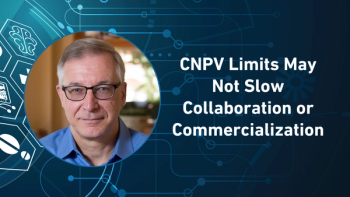
DSCSA compliance: Industry is still in the trenches
Nov. 27, 2018, was to be a red-letter day in the 10-year program to implement an end-to-end pharma traceability system. Did industry meet the deadline?
Hey! Remember that Nov. 27 DSCSA deadline? The one that required 100% of pharma products to have unique serial numbers embossed on their packaging to go into commercial distribution in the US, on pain of having the products removed from the market and creating havoc in pharmacy operations? What happened?
There’s some good news to report here—and a whole lot of future uncertainty. First of all, there is no authoritative report from FDA that the industry complied with this deadline, mostly because FDA was not geared up to look into it, and then the government shutdown took hold at the end of December. It is also known that a number of US facilities—including, reportedly, the troubled McPherson, KS, plant that Pfizer acquired from Hospira, and which has been the subject of repeated failed FDA inspections—requested, and received, one-year extensions for DSCSA compliance.
Second, the fine print of the Drug Supply Chain Security Act (DSCSA) specifies that products coming off packaging lines have the serialization requirement post-Nov. 27. There are tons of products already in wholesaler and distributor warehouses, around the world, that were manufactured and packaged pre-Nov. 27. Moreover, manufacturer’s own warehouses are likely stacked to the ceilings with pre-Nov. 27 product. (There were reports during 2018 that manufacturers were cranking up production to get under the wire in this regard.)
“This is shaping up like Y2K did back in 2000,” says Greg Cathcart, CEO of Excellis Health Solutions, a consulting firm. “A lot of work has been done; a lot of work is yet to do, and because of the grandfathering of unserialized product, it will be months or years until we’re where we need to be.”
“It is our expectation that we will see higher and higher numbers of products bearing the new Product Identifiers in commerce in the coming year but that we will likely still see some grandfathered product without the new Product Identifier for potentially another 2 years or more,” says Scott Mooney, VP Distribution Operations at McKesson.
A
A noteworthy element of the Collaboration Hub is that it is based on
Matching data with product
But we’re getting ahead of ourselves. While most global pharma companies have had a serialization effort under way for years, most of the industry is still grappling with the basic issues of serializing product containers. One wholesaler source says that “we’ve had shipments where the lot [number] on the package didn’t match the lot in the documentation—problems we never thought we’d have. Just underscores the importance of matching the physical product with its data…”
Excellis’ Cathcart points out that getting the serialization equipment set up and running is a first step; setting up the data-collection and -exchange systems is still a work in progress. Compliance with DSCSA is a lot more than just the serial numbers, and working out the “sustainability” of the compliance process will be time-consuming and expensive.
There are an estimated 7,000-10,000 packaging lines supplying the US market; according to Excellis estimates, these have (or will) cost $1.7-3.4 billion in equipment expenditures, but an additional $800 million-$1.6 billion to operate and maintain annually, including software maintenance. Moreover, the system and maintenance costs at pharmacies and healthcare systems—also part of the DSCSA scope—will cost as much as $1 billion in implementation, and $700 million in ongoing costs.
Finally, DSCSA is only the US system; global producers have to deal with the European Falsified Medicines Directive (FMD), as well as national systems across 40-odd other countries or regions. FMD has a nominal February 9 deadline in the EU. Evren Ozkaya, CEO of Supply Chain Wizard, a New Jersey-based consulting firm, says that about half of the estimated 2,400 suppliers to the EU market have registered with the European Medicines Verification Organization, and most if not all of the individual nations have set up their national data-exchange hubs (where serial numbers of pharma packages can be verified). “Everyone is asking, though—where are the other 1,000+ companies” who have yet to register. A delay in meeting next month’s deadline is likely, he says.
Newsletter
Stay ahead in the life sciences industry with Pharmaceutical Commerce, the latest news, trends, and strategies in drug distribution, commercialization, and market access.





